52 start with D start with D
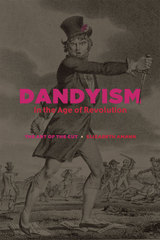
In Dandyism in the Age of Revolution, Elizabeth Amann shows that in France, England, and Spain, daring dress became a way of taking a stance toward the social and political upheaval of the period. France is the centerpiece of the story, not just because of the significance of the Revolution but also because of the speed with which its politics and fashions shifted. Dandyism in France represented an attempt to recover a political center after the extremism of the Terror, while in England and Spain it offered a way to reflect upon the turmoil across the Channel and Pyrenees. From the Hair Powder Act, which required users of the product to purchase a permit, to the political implications of the feather in Yankee Doodle’s hat, Amann aims to revise our understanding of the origins of modern dandyism and to recover the political context from which it emerged.
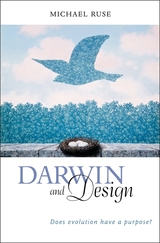
The intricate forms of living things bespeak design, and thus a creator: nearly 150 years after Darwin's theory of natural selection called this argument into question, we still speak of life in terms of design--the function of the eye, the purpose of the webbed foot, the design of the fins. Why is the "argument from design" so tenacious, and does Darwinism--itself still evolving after all these years--necessarily undo it?
The definitive work on these contentious questions, Darwin and Design surveys the argument from design from its introduction by the Greeks, through the coming of Darwinism, down to the present day. In clear, non-technical language Michael Ruse, a well-known authority on the history and philosophy of Darwinism, offers a full and fair assessment of the status of the argument from design in light of both the advances of modern evolutionary biology and the thinking of today's philosophers--with special attention given to the supporters and critics of "intelligent design."
The first comprehensive history and exposition of Western thought about design in the natural world, this important work suggests directions for our thinking as we move into the twenty-first century. A thoroughgoing guide to a perennially controversial issue, the book makes its own substantial contribution to the ongoing debate about the relationship between science and religion, and between evolution and its religious critics.

The design of information literacy instruction and the building of it are two distinct skillsets and processes; yet all too often everything gets mashed together, creating needless confusion and stress. In this book Turnbow, an instructional designer, and Roth, an instructional technologist, suggest a better way to organize the work. They shed light on the people, processes, and resources required to create a sustainable portfolio of online instruction. With the goal of fostering conversations in your library about the most streamlined and effective ways to get the work done, they provide guidance on such topics as
- design and development processes, complete with “I.D. in Action” examples and sample design documents;
- thumbnail descriptions of ADDIE, SAM, and design thinking methods;
- creating learning objects;
- types of software tools and how to evaluate them;
- crafting the best documentation of your work for efficient maintenance and reuse;
- adapting assessment to your learning outcomes and purpose;
- when to design for performance support, an underutilized method in libraries; and
- starting points for those interested in developing instructional design and development skills.
Demystifying the instructional design and development process used to create online learning objects, this book will help you understand how instructional design principles and approaches can benefit your learners.

Reading eight major contemporary authors through the lens of chaos theory, Conte offers new and original interpretations of works that have been the subject of much critical debate
Design and Debris discusses the relationship between order and disorder in the works of John Hawkes, Harry Mathews, John Barth, Gilbert Sorrentino, Robert Coover, Thomas Pynchon, Kathy Acker, and Don DeLillo. In analyzing their work, Joseph Conte brings to bear a unique approach adapted from scientific thought: chaos theory. His chief concern is illuminating those works whose narrative structures locate order hidden in disorder (whose authors Conte terms “proceduralists”), and those whose structures reflect the opposite, disorder emerging from states of order (whose authors Conte calls “disruptors”).Documenting the paradigm shift from modernism, in which artists attempted to impose order on a disordered world, to postmodernism, in which the artist portrays the process of “orderly disorder,” Conte shows how the shift has led to postmodern artists' embrace of science in their treatment of complex ideas. Detailing how chaos theory interpenetrates disciplines as varied as economics, politics, biology, and cognitive science, he suggests a second paradigm shift: from modernist specialization to postmodern pluralism. In such a pluralistic world, the novel is freed from the purely literary and engages in a greater degree of interactivity-between literature and science, and between author and reader. Thus, Conte concludes, contemporary literature is a literature of flux and flexibility.

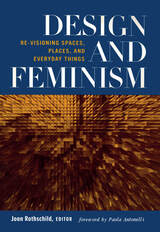
The interdisciplinary essays reflect the writers' diverse fields- architecture, planning, industrial and graphic design, and architectural, urban, and design history. Essays cover such subject as rethinking the American city, graphic design and the urban landscape, working at home, theories of women and design, and a trio of essays on industrial designs. A review essay of the literature in these fields- the first of its kind- rounds out the collection.
Contributors are Amelia Amon, Wendy E. Brawer, Cheryl Buckley, Sue Cavanagh, Alethea Cheng, Roberta M. Feldman, Etain Fitzpatrick, Alice T. Friedman, Dolores Hayden, Ghislaine Hermanuz, Barbara Knecht, Ellen Lupton, Maggie Mahboubian, Francine Monaco, Nancy Perkins, Victoria Rosner, Joan Rothschild, Susana Torre, Lynne Walker, and Leslie Kanes Weismann.

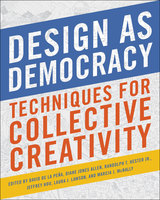
How can we design places that fulfill urgent needs of the community, achieve environmental justice, and inspire long-term stewardship? By bringing community members to the table, we open up the possibility of exchanging ideas meaningfully and transforming places powerfully. Collaboration like this is hands-on democracy in action. It’s up close. It’s personal. For decades, participatory design practices have helped enliven neighborhoods and promote cultural understanding. Yet, many designers still rely on the same techniques that were developed in the 1950s and 60s. These approaches offer predictability, but hold waning promise for addressing current and future design challenges. Design as Democracy: Techniques for Collective Creativity is written to reinvigorate democratic design, providing inspiration, techniques, and case stories for a wide range of contexts.
Edited by six leading practitioners and academics in the field of participatory design, with nearly 50 contributors from around the world, Design as Democracy shows how to design with communities in empowering and effective ways. The flow of the book’s nine chapters reflects the general progression of community design process, while also encouraging readers to search for ways that best serve their distinct needs and the culture and geography of diverse places. Each chapter presents a series of techniques around a theme, from approaching the initial stages of a project, to getting to know a community, to provoking political change through strategic thinking. Readers may approach the book as they would a cookbook, with recipes open to improvisation, adaptation, and being created anew.
Design as Democracy offers fresh insights for creating meaningful dialogue between designers and communities and for transforming places with justice and democracy in mind.


An in-depth look at life in the “smart” city
Technology has fundamentally transformed urban life. But today’s “smart” cities look little like what experts had predicted. Aaron Shapiro shows us the true face of the revolution in urban technology, taking the reader on a tour of today’s smart city. Along the way, he develops a new lens for interpreting urban technologies—logistical governance—to critique an urban future based on extraction and rationalization.
Through ethnographic research, journalistic interviews, and his own hands-on experience, Shapiro helps us peer through cracks in the smart city’s facade. He investigates the true price New Yorkers pay for “free,” ad-funded WiFi, finding that it ultimately serves the ends of commercial media. He also builds on his experience as a bike courier for a food delivery startup to examine how promises of “flexible employment” in the gig economy in fact pave the way for strict managerial control. And he turns his eye toward hot-button debates around police violence and new patrol technologies, asking whether algorithms are really the answer to reforming our cities’ ongoing crises of criminal justice.
Through these gripping accounts of the new technological urbanism, Design, Control, Predict makes vital contributions to conversations around data privacy and algorithmic governance. Shapiro brings much-needed empirical research to a field that has often relied on “10,000-foot views.” Timely, important, and expertly researched, Design, Control, Predict doesn’t just help us comprehend urbanism today—it advances strategies for critiquing and resisting a dystopian future that can seem inevitable.
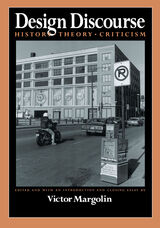


“That’s what we do really: we do miracles,” said Anne-Marie Nyiranshimiyimana, who learned masonry in helping to build the Butaro Hospital, a project designed for and with the people of Rwanda using local materials. This, and other projects designed with dignity, show the power of good design. Almost nothing influences the quality of our lives more than the design of our homes, our schools, our workplaces, and our public spaces. Yet, design is often taken for granted and people don’t realize that they deserve better, or that better is even possible.
In Design for Good, John Cary offers character-driven, real-world stories about projects around the globe that offer more—buildings that are designed and created with and for the people who will use them. The book reveals a new understanding of the ways that design shapes our lives and gives professionals and interested citizens the tools to seek out and demand designs that dignify.
For too long, design has been seen as a luxury, the province of the rich, not the poor. That can no longer be acceptable to those of us in the design fields, nor to those affected by design that doesn’t consider human aspects.
From the Mulan Primary School in Guangdong, China to Kalamazoo College’s Arcus Center for Social Justice Leadership, the examples in the book show what is possible when design is a collaborative, dignified, empathic process. Building on a powerful foreword by philanthropist Melinda Gates, Cary draws from his own experience as well as dozens of interviews to show not only that everyone deserves good design, but how it can be achieved. This isn’t just another book for and about designers. It’s a book about the lives we lead, inextricably shaped by the spaces and places we inhabit.
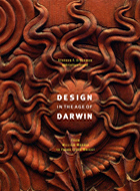
Charles Darwin’s monumental The Origin of Species, published in 1859, forever changed the landscape of natural science. The scientific world of the time had already established the principle of the “intelligent design” of a Creator; the art world had spent centuries devoting itself to the celebration of such a Designer’s creation. But the language of the book, and its implications, were stunning, and the ripples Darwin made when he rocked the boat spread outward: if he could question the Designer, what effect might there be on the art world, and on mortal designers’ renderings of Creation.
Published in partnership with the Mary and Leigh Block Museum of Art to accompany its exhibit, this catalog of essays and more than fifty color exhibition plates invokes these two senses of “intelligent design”—one from the debates between science and theology and the other from the world of art, particularly architecture and the decorative arts. The extensive exhibition includes furniture, metalware, glassware, textiles, and designs on loan from public and private collections in the United States and England. Among the artwork included are items from William Morris, C. R. Ashbee, Christopher Dresser, C. F. A. Voysey, Frank Lloyd Wright, and Louis Sullivan. Through these pieces and the accompanying examinations, the book explores how popular conceptions of the theory of evolution were used or rejected by British and American artists in the years that followed Darwin’s publication.

Design Integrations calls for an innovative rethinking of design education, one that recognizes the changing modes of design and the shifting forms of user experience. The contributors urge new methods of approach that focus on interdisciplinary collaboration between the academic and business worlds. These essays, among the first to focus on the future of design, often in-depth explorations of inter-institutional projects, cross-cultural learning experiences, and a multinational healthcare project. Design Integrations will be of interest to design teachers and practitioners alike.


Design is central to the appeal, messaging, and usefulness of books, but to most readers, it’s mysterious or even invisible. Through interiors as well as covers, designers provide structure and information that shape the meaning and experience of books. In The Design of Books, Debbie Berne shines a light on the conventions and processes of her profession, revealing both the aesthetic and market-driven decisions designers consider to make books readable and beautiful. In clear, unstuffy language, Berne reveals how books are put together, with discussions of production considerations, typography and fonts, page layouts, use of images and color, special issues for ebooks, and the very face of each book: the cover.
The Design of Books speaks to readers and directly to books’ creators—authors, editors, and other publishing professionals—helping them to become more informed partners in the design of their projects. Berne lays out the practical steps at each stage of the design process, providing insight into who does what when and offering advice for authors on how to be effective advocates for their ideas while also letting go and trusting their manuscripts with teams of professionals. She includes guidance as well for self-publishing authors, including where to find a designer, what to expect from that relationship, and how to art direct your own book.
Throughout, Berne teaches how understanding the whats, hows, and whys of book design heightens our appreciation of these cherished objects and helps everyone involved in the process to create more functional, desirable, and wonderful books.




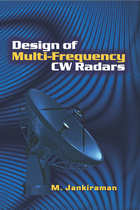

Public protests are a vital tool for asserting grievances and creating temporary, yet tangible, communities as the world becomes more democratic and urban in the twenty-first century. While the political and social aspects of protest have been extensively studied, little attention has been paid to the physical spaces in which protests happen. Yet place is a crucial aspect of protests, influencing the dynamics and engagement patterns among participants. In The Design of Protest, Tali Hatuka offers the first extensive discussion of the act of protest as a design: that is, a planned event in a space whose physical geometry and symbolic meaning are used and appropriated by its organizers, who aim to challenge socio-spatial distance between political institutions and the people they should serve.
Presenting case studies from around the world, including Tiananmen Square in Beijing; the National Mall in Washington, DC; Rabin Square in Tel Aviv; and the Plaza de Mayo in Buenos Aires, Hatuka identifies three major dimensions of public protests: the process of planning the protest in a particular place; the choice of spatial choreography of the event, including the value and meaning of specific tactics; and the challenges of performing contemporary protests in public space in a fragmented, complex, and conflicted world. Numerous photographs, detailed diagrams, and plans complement the case studies, which draw upon interviews with city officials, urban planners, and protesters themselves.



With the role of the landscape architect increasing as it is in importance, this first comprehensive survey of the art and practice of landscape architecture fills a great need.
Norman T. Newton has included over 400 illustrations in his book, which conveys a basic understanding of the aims and scope of landscape architecture and offers visual analyses of major historic works, each in the context of its own time.
The first third of the study is concerned with landscape architecture in the Western world, mainly Europe, from ancient times to the mid-nineteenth century. But the major part of the work is devoted to the development of landscape architecture in the century that has passed since it acquired the status of a profession and an independent discipline.
Concentrating primarily on the United States, Mr. Newton reviews his subject from its beginnings in colonial days to the work of Olmsted, Vaux, Cleveland, Weidenmann, Eliot, Platt, and the founders of the American Society of Landscape Architects. He discusses the Columbian Exposition of 1893, the "City Beautiful" movement and the growth of city planning, the Country Place Era, town planning in England and America, American national and state parks, parkways, urban open spaces, and recent variations in professional practice.
Mr. Newton concludes his book with a timely discussion of the vital role that landscape architecture plays in the conservation of natural resources and in protection of the environment.


Brown describes the effects that climate has on outdoor spaces-using vivid illustrations and examples-while providing practical tools that can be used in everyday design practice. The heart of the book is Brown's own design process, as he provides useful guidelines that lead designers clearly through the complexity of climate data, precedents, site assessment, microclimate modification, communication, design, and evaluation. Brown strikes an ideal balance of technical information, anecdotes, examples, and illustrations to keep the book engaging and accessible. His emphasis throughout is on creating microclimates that attend to the comfort, health, and well-being of people, animals, and plants.
Design with Microclimate is a vital resource for students and practitioners in landscape architecture, architecture, planning, and urban design.

Design with Nature on Cape Cod and the Islands seeks to reverse this damaging trend by offering landscape professionals, local officials, and homeowners a sustainable approach to landscape design based on the ecoregion’s native plants and plant communities. Presenting detailed discussions of Cape Cod’s natural history, Jack Ahern focuses on the principal plant communities that define its landscape character and that are well adapted to local soils and growing conditions, including climate change. The book also includes strategies for ecological planting design and a portfolio of photographs of active ecologically designed landscapes.


Working beyond the traditions established for Latin, scribes of English needed to be more inventive, using each book as an opportunity to redesign. Surveying eight centuries of graphic design in manuscripts and inscriptions, Designing English focuses on the craft, agency, and intentions of scribes, painters, and engravers from the Anglo-Saxon to the early Tudor periods. The book examines format, layout, and decoration, as well as bilingual manuscripts and oral recitations, weighing the balance of ingenuity and copying, imagination and practicality, behind early English book design. With over ninety illustrations, drawn especially from the holdings of the Bodleian Library, Designing English gives a comprehensive overview of English books and other material texts across the Middle Ages.

British culture is marked by indelible icons—red double-decker buses, large oak wardrobes, and the compact sleekness of the Mini. But British industrial and product design have long lived in the shadows of architecture and fashion. Cheryl Buckley here delves into the history of British design culture, and in doing so uniquely tracks the evolution of the British national identity.
Designing Modern Britain demonstrates how interior design, ceramics, textiles, and furniture craft of the twentieth century contain numerous hallmark examples of British design. The book explores topics connected to the British design aesthetic, including the spread of international modernism, the eco-conscious designs of the 1980s and 1990s, and the influence of celebrity product designers and their labels. Buckley also investigates popular nostalgia in recent times, considering how museum and gallery exhibitions have been instrumental in reimagining Britain’s past and how the heritage industry has fueled a growing trend among designers of employing images of British culture in their work.

Designing Modern Germany reveals how German attitudes toward national identity, modernity and technology are crucial to understanding German design. Aynsley traces the historical development of German design, beginning in the 1870s with the first dedicated Arts and Crafts schools and stretching through to the famous institutions of the Bauhaus and the Ulm Hochschule für Gestaltung. He analyses the works of leading figures such as Peter Behrens and Hannes Meyer, through to Ingo Maurer and Jil Sander, and many others in design specialties including graphics, industrial and furniture design, fashion and architecture. He also offers the first consideration of the contrasting design traditions of East and West Germany between 1949 and 1989. Whether examining the pre-First World War department store, the National Socialist fashion system or East Germany’s official design culture, Designing Modern Germany reveals that German design significantly affected citizens’ daily lives.
An essential read for designers and scholars of German design and history, Designing Modern Germany is a key text for understanding Germany’s major contribution to twentieth-century design.

From cars to cameras, design from Japan is ubiquitous. So are perceptions of Japanese design, from calming, carefully crafted minimalism to avant-garde catwalk fashion, or the cute, Kawaii aesthetic populating Tokyo streets. But these portrayals overlook the creativity, generosity, and sheer hard work that has gone into creating and maintaining design industries in Japan.
In Designing Modern Japan, Sarah Teasley deftly weaves together the personal stories of people who shaped and shape Japan’s design industries with social history, economic conditions, and geopolitics.. Key to her account is how design has been a strategy to help communities thrive during turbulent times, and for making life better along the way. Deeply researched and superbly illustrated, Designing Modern Japan appeals to a wide audience for Japanese design, history, and culture.
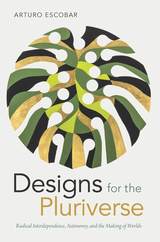


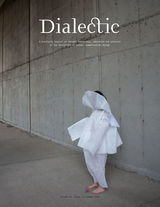
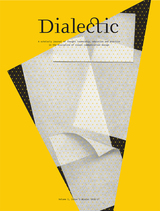
examination of issues that affect design education, research,
and inquiry into their effects on the practice of design. Michigan
Publishing, the hub of scholarly publishing at the University of Michigan,
publishes Dialectic on behalf of the AIGA (American Institute of
Graphic Arts) Design Educators Community (DEC).
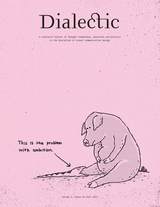
examination of issues that affect design education, research,
and inquiry into their effects on the practice of design. Michigan
Publishing, the hub of scholarly publishing at the University of Michigan,
publishes Dialectic on behalf of the AIGA (American Institute of
Graphic Arts) Design Educators Community (DEC).
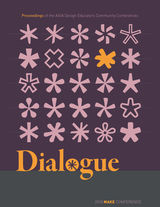
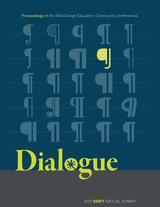
Dialogue is the ongoing series of fully open access proceedings of the conferences and national symposia of the AIGA Design Educators Committee.
Although each conference varies in theme, issues of Dialogue contain papers from DEC conferences which focus on topics that affect design education, research, and professional practice.
Michigan Publishing, the hub of scholarly publishing at the University of Michigan, publishes Dialogue on behalf of the AIGA DEC.

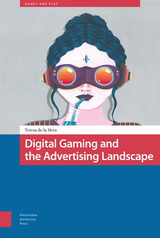
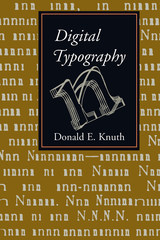

The contributors (Gianfranco Zaccai, Albert Borgmann, Richard Buchanan, Augusto Morello, Tufan Orel, Nigel Cross, Victor Margolin, Langdon Winner, Carl Mitcham, Tony Fry, and Ezio Manzini) focus on three broad themes that form a sequence of fundamental issues: how to shape design as a subject matter, how to distinguish the activity of designing in the complex world of action, and how to address the basic questions of value and responsibility that persistently arise in the discussion and practice of design. The editors' introduction provides a useful overview of these questions and offers a multidisciplinary framework for design studies. The essays discuss such topics as the relation of aesthetics to technology, the place of design in social action, the role of the consumer in design decisions, and the need for ethical practice in contemporary design. Manzini's concluding essay shows how the issue of ethics should connect responsible behavior to decisions made every day in the manufacture of objects.

It soon became apparent, however, that technological progress had not obviated the inherent value of drawing, and that, in fact, it opened up new avenues for convergent and hybrid drawing practices. This book traces the evolution of design-based drawing through analysis of a series of research projects from the 1980s to recent years that have sought to characterize the changing practices of design within various industries. Built on more than three hundred interviews with designers, academics, and design students, and an exhaustive analysis of thousands of drawings, it aims to generate discussion around historical and contemporary models of the design process.
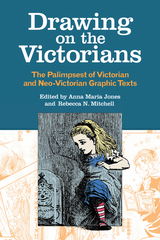
Late nineteenth-century Britain experienced an unprecedented explosion of visual print culture and a simultaneous rise in literacy across social classes. New printing technologies facilitated quick and cheap dissemination of images—illustrated books, periodicals, cartoons, comics, and ephemera—to a mass readership. This Victorian visual turn prefigured the present-day impact of the Internet on how images are produced and shared, both driving and reflecting the visual culture of its time.
From this starting point, Drawing on the Victorians sets out to explore the relationship between Victorian graphic texts and today’s steampunk, manga, and other neo-Victorian genres that emulate and reinterpret their predecessors. Neo-Victorianism is a flourishing worldwide phenomenon, but one whose relationship with the texts from which it takes its inspiration remains underexplored.
In this collection, scholars from literary studies, cultural studies, and art history consider contemporary works—Alan Moore’s League of Extraordinary Gentlemen, Moto Naoko’s Lady Victorian, and Edward Gorey’s Gashlycrumb Tinies, among others—alongside their antecedents, from Punch’s 1897 Jubilee issue to Alice in Wonderland and more. They build on previous work on neo-Victorianism to affirm that the past not only influences but converses with the present.
Contributors: Christine Ferguson, Kate Flint, Anna Maria Jones, Linda K. Hughes, Heidi Kaufman, Brian Maidment, Rebecca N. Mitchell, Jennifer Phegley, Monika Pietrzak-Franger, Peter W. Sinnema, Jessica Straley


Pierrot, Little Bo Peep, cowboy: these characters and many more form part of this colorful story of dressing up, from the accession of Queen Victoria to the coronation of Queen Elizabeth II. During this time, fancy dress became a regular part of people’s social lives, and the craze for it spread across Britain and the Empire, reaching every level of society. Spectacular and witty costumes appeared at suburban street carnivals, victory celebrations, fire festivals, missionary bazaars, and the extravagant balls of the wealthy. From the Victorian middle classes performing “living statues” to squads of Shetland men donning traditional fancy dress and setting fire to a Viking ship at the annual Up Helly Aa celebration, this lavishly illustrated book provides a unique view into the quirky, wonderful world of fancy dress.

Thomas, a museum curator, delves deeply into the rich design history of the Netherlands, beginning with the historical roots of Dutch crafts education and the moral and social ideals of modernism that became central to the nation’s cultural dialogue. Touching upon such issues as the emergence of the professional industrial designer, public work initiatives, debates about design as art, and the provocative notion of “anti-design,” Thomas argues that though Dutch design from the beginning has been driven by aims of functionality, simplicity, and affordability, it has also embraced luxury and exclusivity. The book also discusses the role played by leading Dutch designers and their works, including Wim Crouwel, Marcel Wanders, and the design collective Droog Design.
An unprecedented, detailed history, Dutch Design Culture is a critical primer on one of the leading national design movements today.

In 1988–1989 the three hundredth anniversary of an important historical event, the ascension of William and Mary to the thrones of England and Scotland, was celebrated in the Netherlands, the United Kingdom, and the United States of America. The symposium on Dutch garden art held at Dumbarton Oaks in May 1988 was the only scholarly event during the anniversary year that focused wholly upon gardens.
This wide-ranging collection of essays charts the history, scope, and spread of Dutch garden art during the seventeenth century. A group of scholars, mostly Dutch, surveys what has been called the “golden age” of Dutch garden design. Essays discuss the political context of William’s building and gardening activities at his palace of Het Loo in the Netherlands; the development of a distinctively Dutch garden art during the seventeenth century; country house poetry; and specific estates and their gardens, such as those of Johan Maurits van Nassau-Siegen at Cleves or Sorgvliet, the estate of Hans Willem Bentinck, later the Earl of Portland. Other contributions concern typical Dutch planting and layouts, with a focus upon Jan van der Green’s much-circulated Den Nederlandtsen Hovenier; the designs of Daniel Marot, the Huguenot refugee from France, who worked for William III in both the Netherlands and England; and the attitudes of the English toward Dutch gardening as it was observed in practice and mythologized through the distorting lens of national cooperation and rivalries.
READERS
Browse our collection.
PUBLISHERS
See BiblioVault's publisher services.
STUDENT SERVICES
Files for college accessibility offices.
UChicago Accessibility Resources
home | accessibility | search | about | contact us
BiblioVault ® 2001 - 2024
The University of Chicago Press









